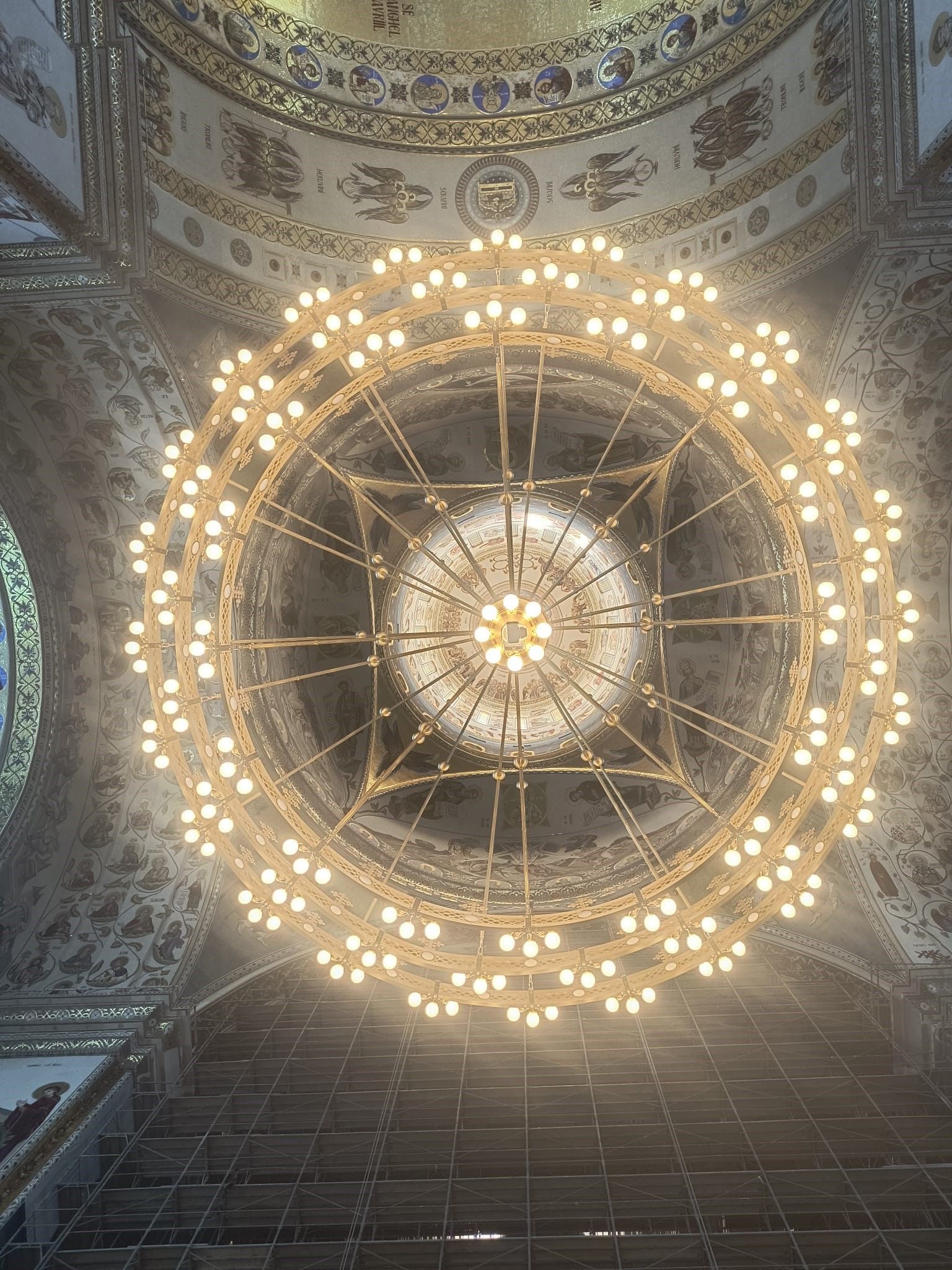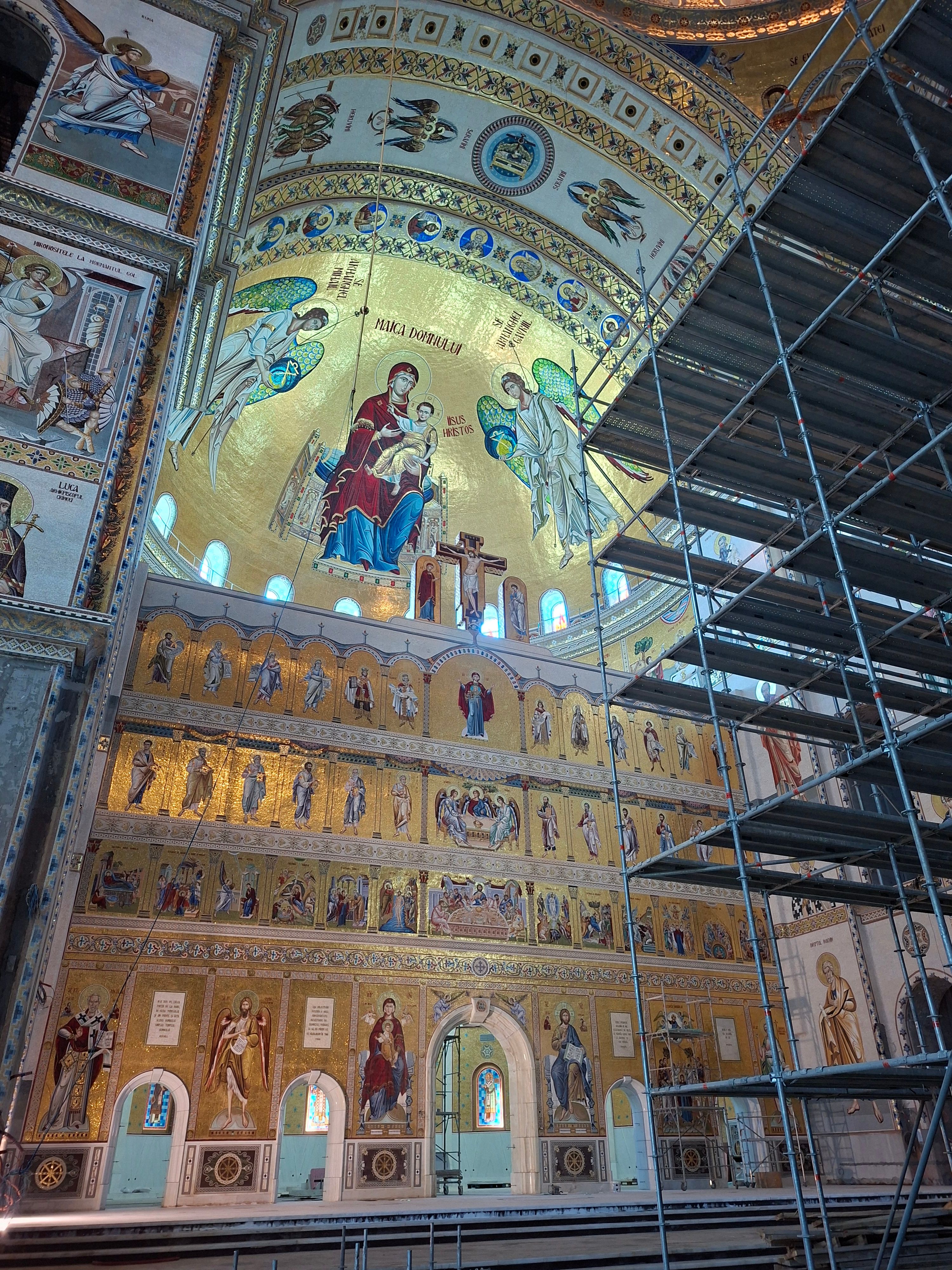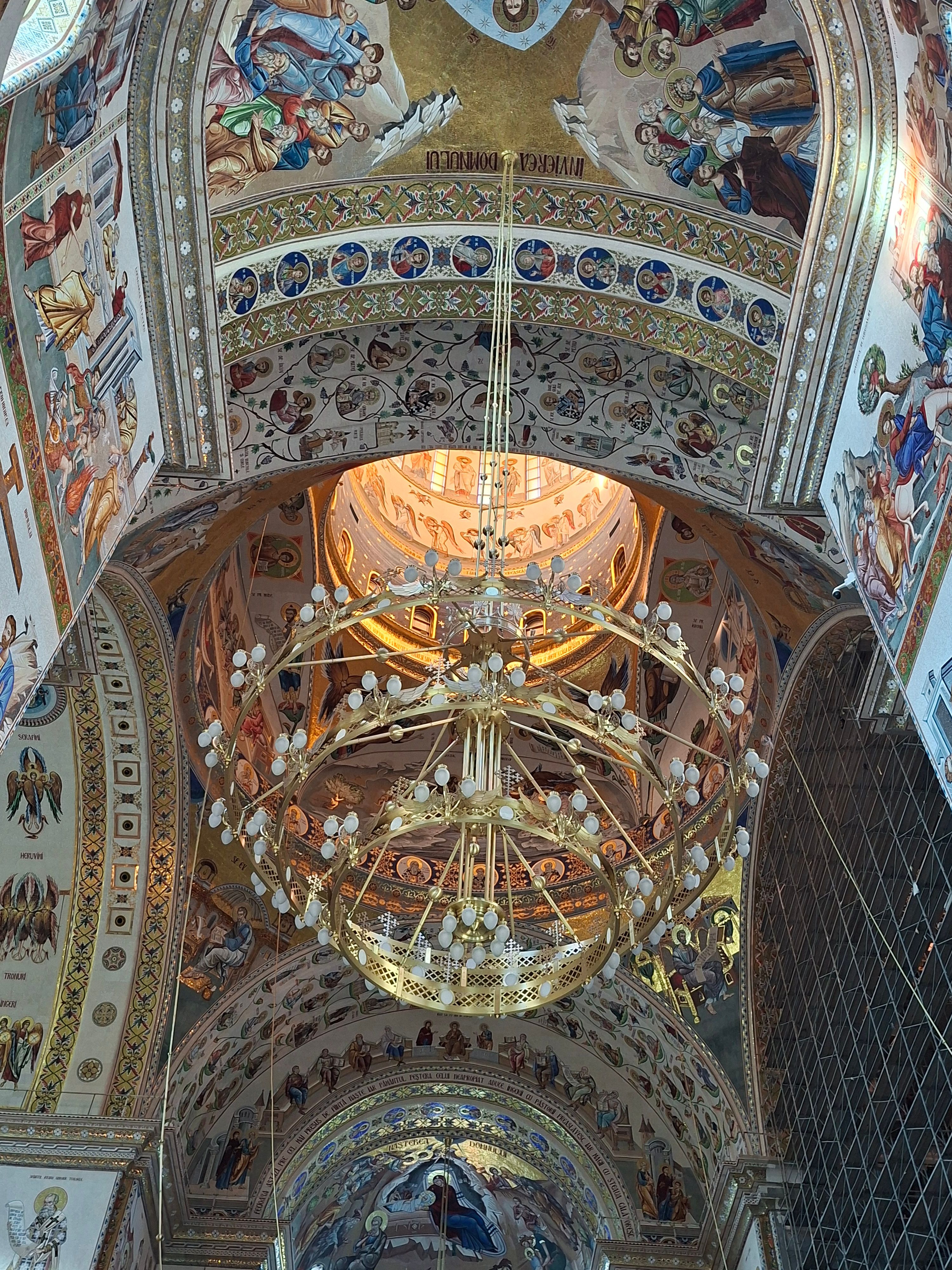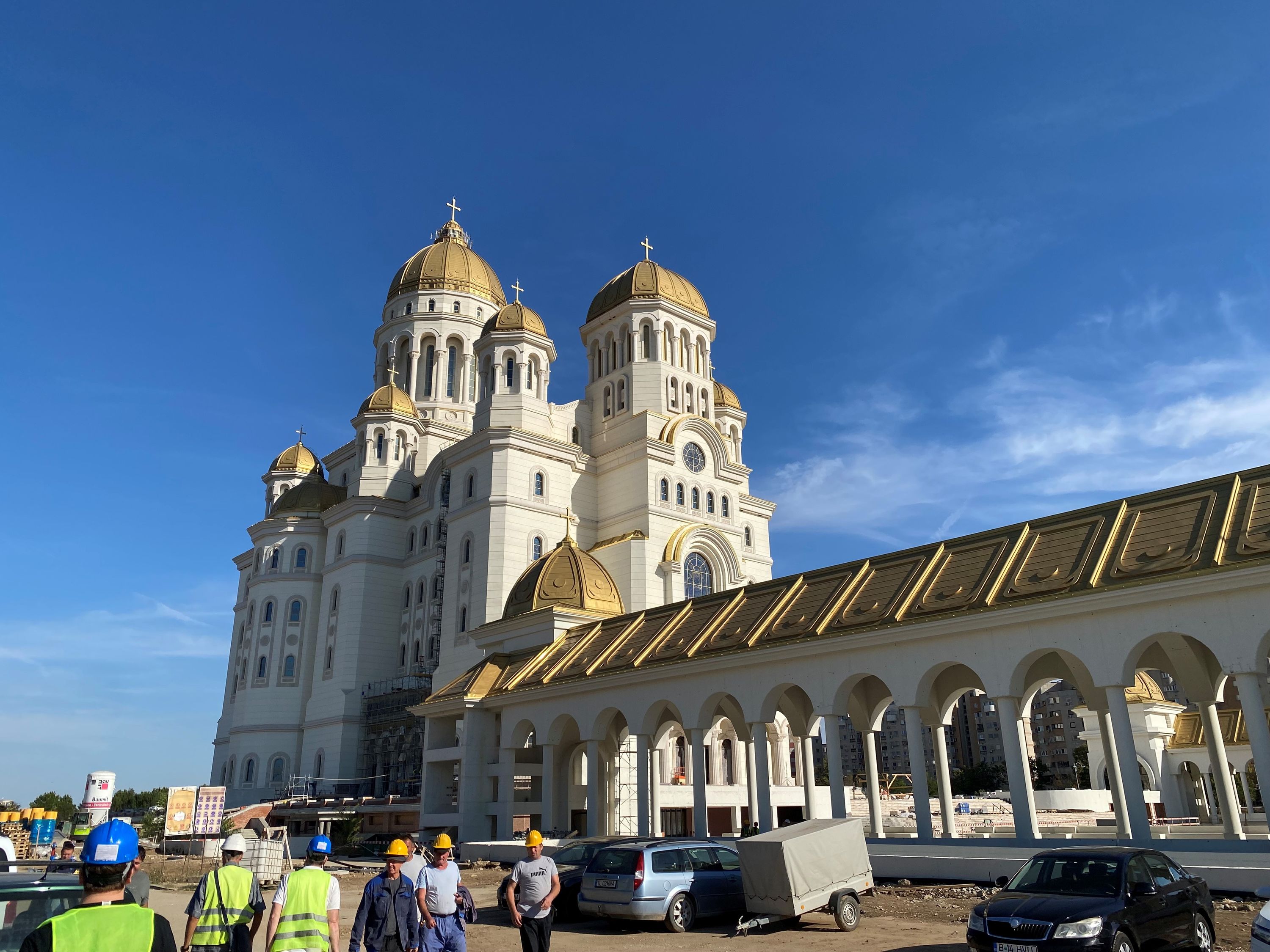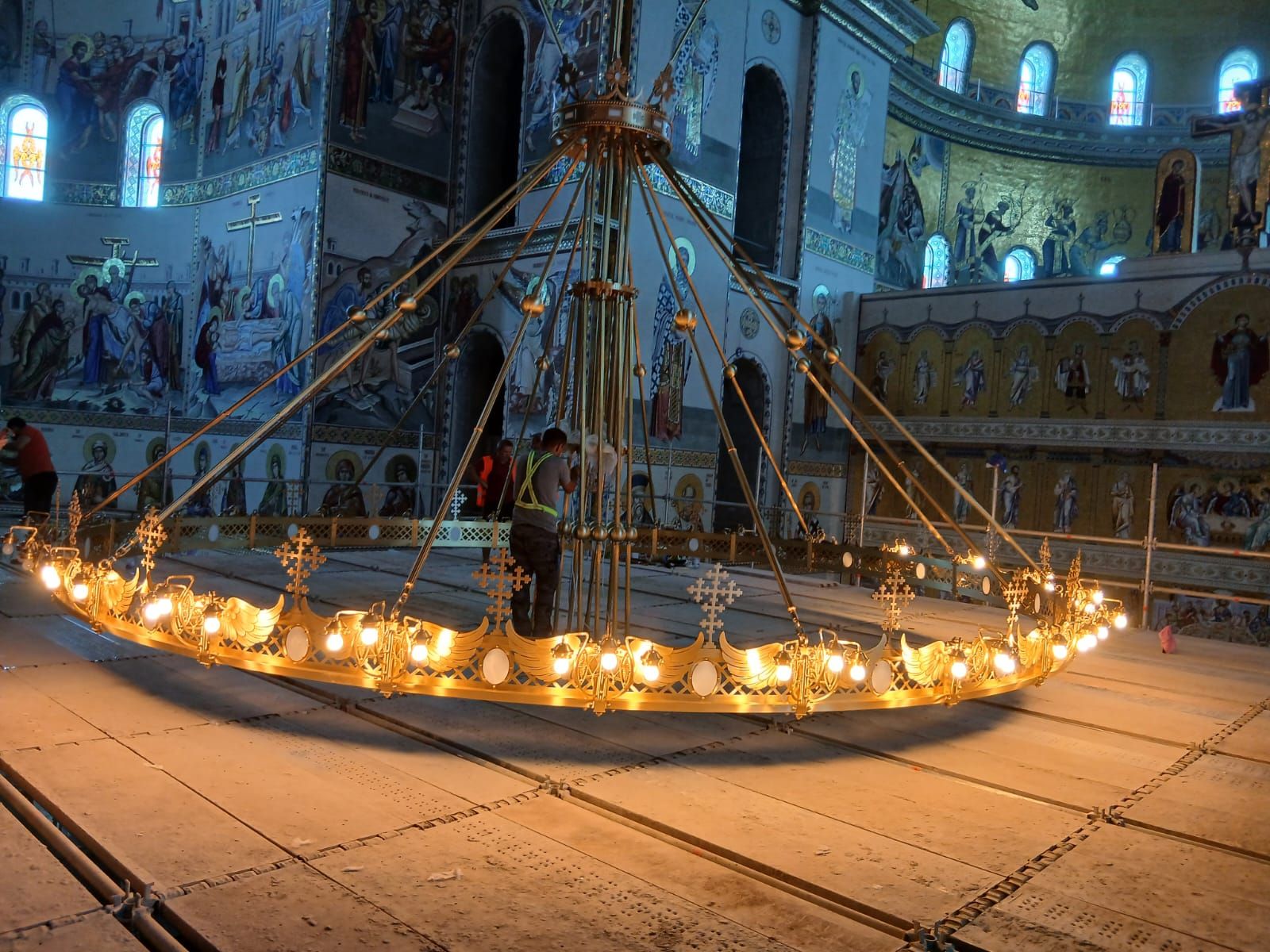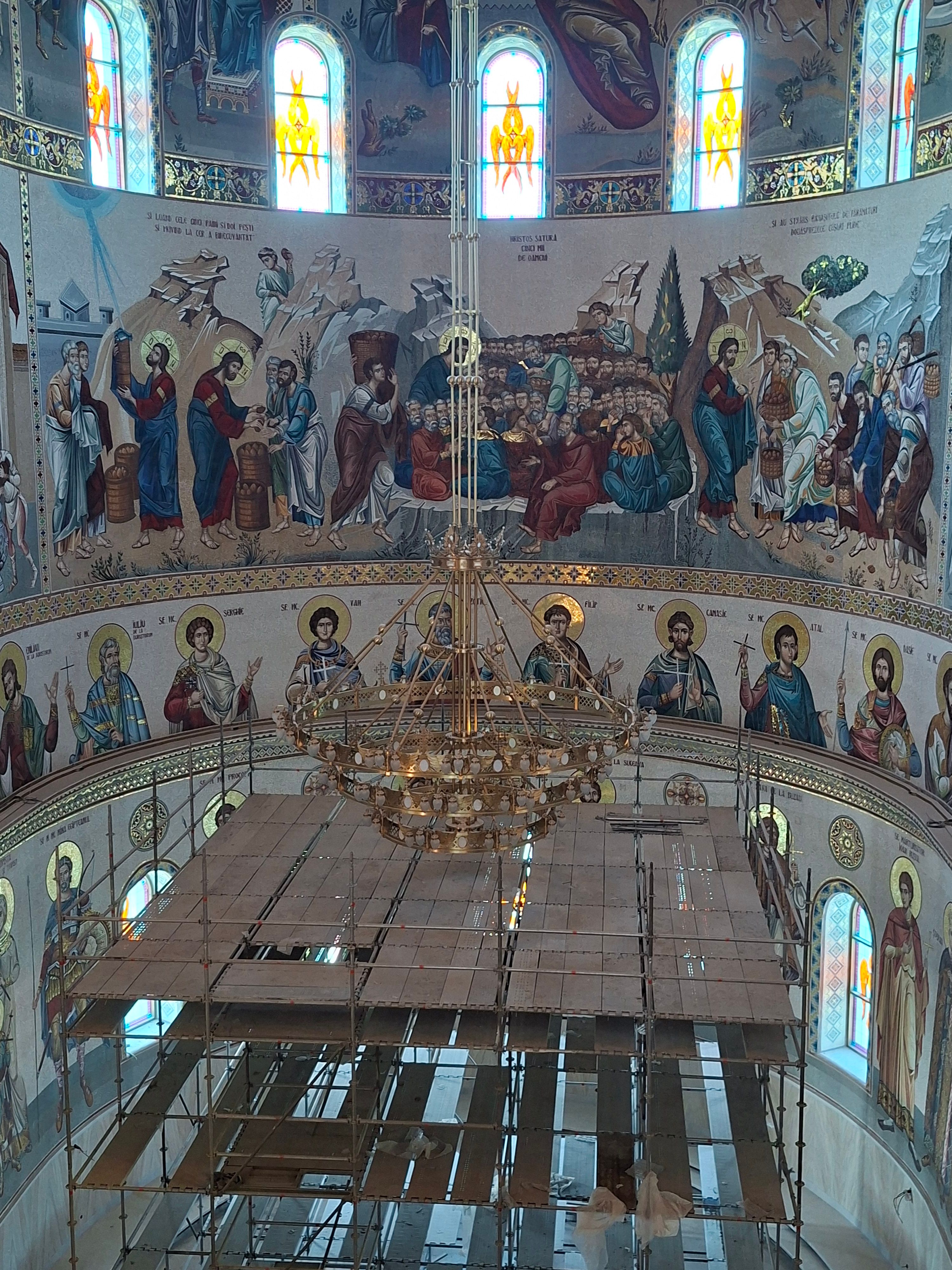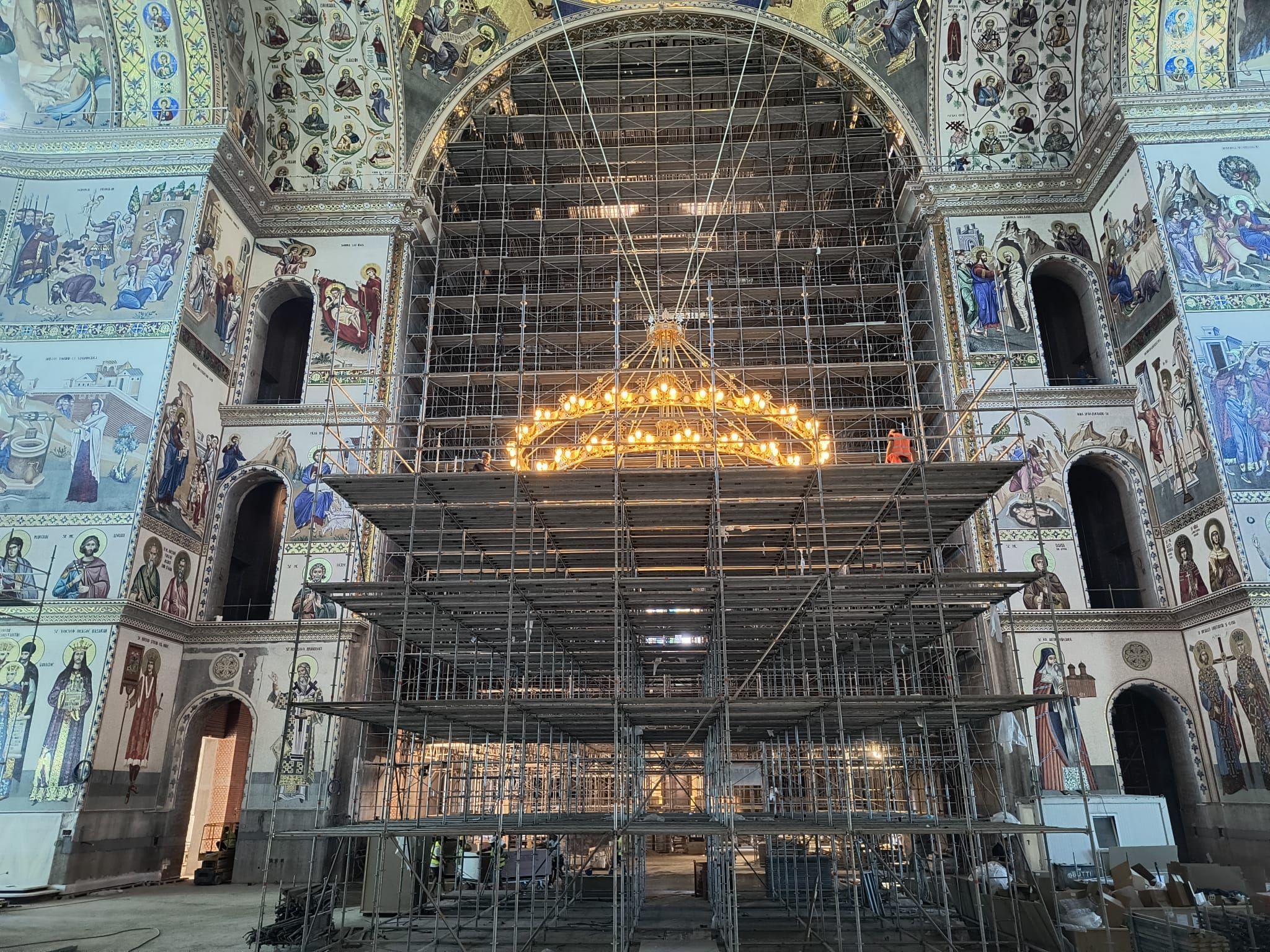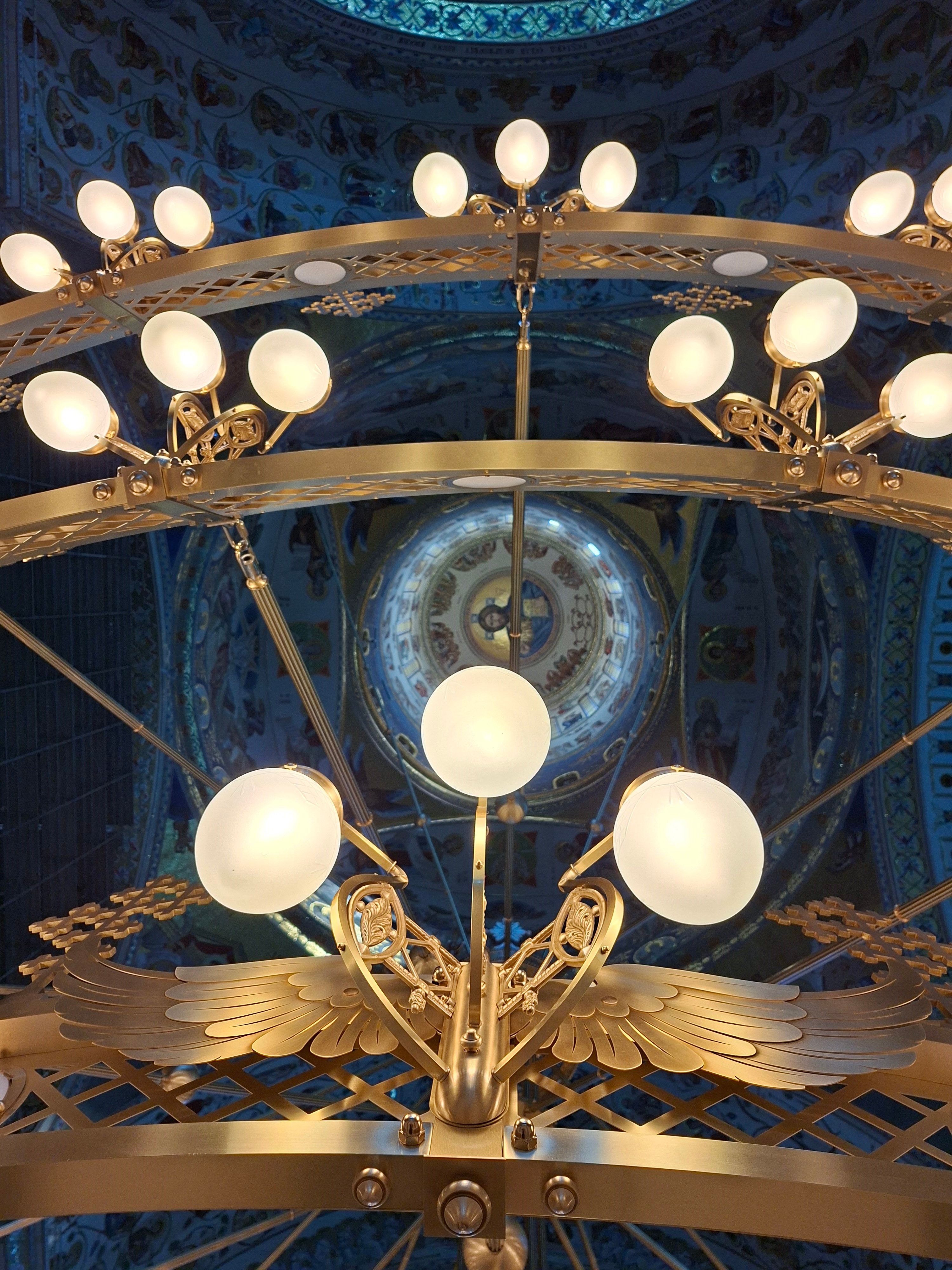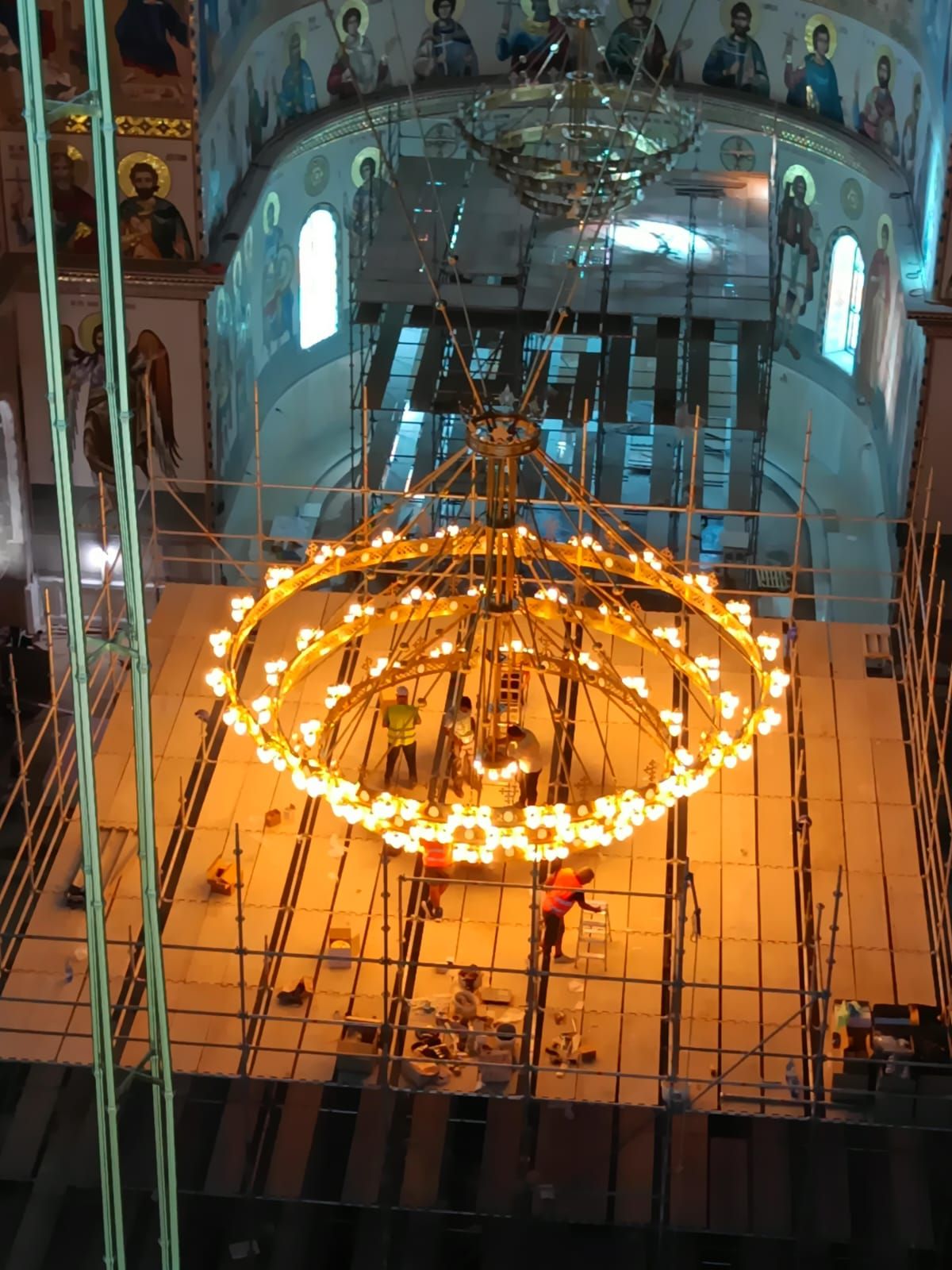Planners and builders need to strike a balance between functionality, liturgy, and aesthetics. Through our work on the Romanian National Cathedral, ORION has gained valuable experience that is guiding many sacred projects.
1. Focus on liturgical requirements
Lighting in churches and cathedrals must support the liturgical process. Different situations—such as festive high masses, silent prayers, or concerts—require variable lighting moods. Modern control systems such as DALI make it possible to adjust these moods flexibly and intuitively.
2. Respecting architectural dimensions
Sacred spaces are often monumental – high domes, wide naves, and complex floor plans present particular challenges. Large luminaires and coordinated zone lighting must ensure scalability and visual harmony without detracting from the architectural effect.
3. Emphasize symbolism and materiality
Bronze, brass, glass, or natural stone—materials used in sacred buildings usually have deep symbolic meaning. Good lighting design highlights these qualities and creates light axes that draw attention to central locations such as the altar, iconostasis, or organ.
4. Create atmosphere and emotion
Light is more than just brightness: it conveys mood. In sacred spaces, this means making reverence, security, and transcendence tangible. Warm, soft light can promote spiritual calm, while festive, bright lighting underscores grand celebrations.
5. Durability and ease of maintenance
Buildings of this size and significance are constructed to last for centuries. The lighting must also meet this requirement. High-quality materials, robust construction, and future-proof technology ensure sustainable use—an essential aspect for clients and operators.
Conclusion: An interplay of art and technology
Lighting design in sacred buildings requires particular sensitivity. It combines liturgical function, architectural dimension, symbolic meaning, and technical precision. Projects such as the Romanian National Cathedral show how well-thought-out lighting design not only illuminates sacred spaces but also enhances their spiritual power.




